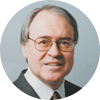The following statement could have come from a textbook: "To diagnose De Quervain's tenosynovitis, use Finkelstein's test, not Eichhoff's test. For differential diagnosis, also perform Phalen's maneuver and look for Tinel's sign." Most chiropractors should be able to understand these instructions in the diagnostic pursuit of hand and wrist disorders.
As weak and vague as that definition is, eponyms are an inviting mystery to many of us, begging the questions: Who are these people, where are these places, and what things are we talking about? We DCs studied hundreds of these eponyms in school, but probably did not give much thought as to where they came from – or why they may be important.
Why Not Be Specific?
There has always been a debate about whether eponyms should be traded in for more specific scientific labels. It can be ... no, it is astounding that so much of medicine and basic science has terminology using eponyms. A website, "Whonamedit," estimates that medicine and health sciences have probably 8,000 or so eponyms, and that does not include other science categories such as physics, etc.
Some common examples such as Alzheimer's (Alois Alzheimer, German psychiatrist), Lou Gehrig's disease (famous baseball player) and Bell's palsy (British surgeon), are deeply embedded in lay jargon. For instance, does "paralysis agitans" sound more recognizable than Parkinson's disease? It is understandable that some writers on this subject predict eponyms are not going away soon.
Eponyms in Health Care
Let's look at some examples of eponyms in health care. Those named after places are not as common, but Lyme disease (Lyme, Connecticut), Ebola virus (Ebola river, Congo) and West Nile virus should sound familiar. In regard to the category of eponyms named after "things," most relate to occupational conditions, such as "tennis elbow" or "mad hatter's disease" (mercury poisoning), and are often not true eponyms.
By far the most interesting group in the eponymous world is the category of conditions named after people. Usually a disease or condition is named after the first professional to discover or discuss it. (It is considered unseemly to name one after yourself!)
Our patients often come to us with the name of a condition from which they or a loved one suffer. Crohn's disease (Burrill Crohn, 1932), Hodgkin's lymphoma (1832) and Asperger's syndrome (Austrian pediatrician, 1944) are examples. But the lists I found on Wikipedia1 and in the more bibliographic Whonamedit are almost endless.
The volume of eponyms is immense because it is now international and gender inclusive. Although starting in Western medical literature, hundreds of people in a multitude of countries are listed in Whonamedit. Women, who were finally admitted into medical schools in the 1800s, are rapidly catching up in representation. These trends are perhaps more evidence that medical eponyms are not going away soon.
There are conditions named after literary allusions, such as Munchausen syndrome, a man who faked illness in order to get attention. Alice in Wonderland syndrome (visual anomaly) is another example. Then there are diseases named after collaborative authors, like Bannayan-Riley-Ruvalcaba, which is truly a disease in search of an acronym in order to shorten it.
Speaking of long names, thankfully the neurological condition called Tourette syndrome did not have to include his full name, which was Georges Albert Edouard Brutus Gilles de la Tourette!
I discovered I have misunderstood the origin of a few conditions. I always thought a Baker's cyst of the knee was so named because it was common in actual bakers! Not so. It was named after William Morrant Baker, 1885. I thought the "sippy" diet for ulcers meant a diet of soft and neutral foods. Not so! Chicago native Bertram Welton Sippy, MD, promoted the soft diet; hence the name.
Swimming in Chiropractic Eponyms
In my mind, it seems impossible for any chiropractic student to pass examinations in anatomy or radiology without the understanding of perhaps hundreds of eponyms. There are more than 700 anatomical parts with eponyms, according to Butner, et al.,2 and either a person knows them or not, since the names give no clue. For instance, the Islands of Langerhans could be islands in the Baltic instead of the pancreas. The Ruffini and Pacinian corpuscles (skin) could relate to Italian pasta, and the Fallopian tubes (after Father Gabriele Falloppio, 1542) could be a slide at the water park.
Then there is radiology. Just pick up the text from the renowned Terry Yochum, DC, and one is buried in descriptive terminology using "names and things." The osteochondritis category alone (inflammation in a joint and cartilage) is full of names like Freiberg, Kohler, Legg, Calve, Perthes, Osgood, Schlatter, Scheuermann, etc. Every chiropractic student at one time in their studies should have been able to name the different joints associated with these names (right?).
In searching for epoynyms in the chiropractic field, I was not surprised at the number of adjustment techniques named after people. These should sound familiar: Thompson, Gonstead, Sweat, Truscott, DeJarnette, Cox, Pierce-Stillwagon, and many others. But there are few chiropractic examination tests named after people. One test stands out: the Derifield test. This popular test for leg-length shortening is named after Romer Derifield, DC, and used especially in the Thompson technique. (I got this story from Steve Agocs, a solid member of our Association for the History of Chiropractic.)
So, I ask you, loyal readers, can you think of eponyms specific to chiropractic (other than techniques)? Eponyms related to tests, exams, radiology or such would be welcome. Chiropractic history is waiting!
References
- List of Eponymous Diseases. Wikipedia.org/wiki/List_of_eponymous_diseases
- Buttner R, Lee J, Cadogan M. De-eponymising anatomical terminology. Life in the Fastlane (Litfl.com), Nov. 18, 2020.
Click here for more information about John Hanks, DC.





